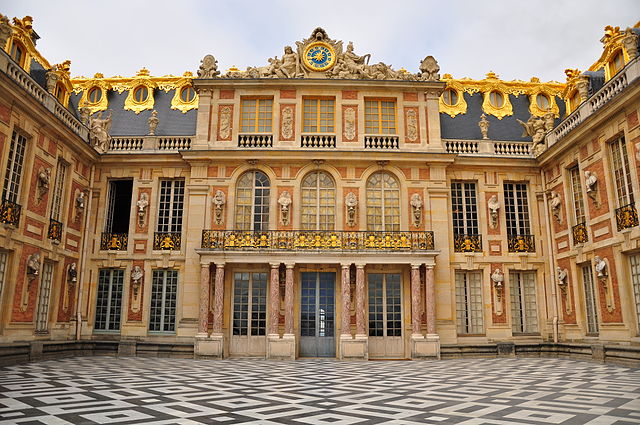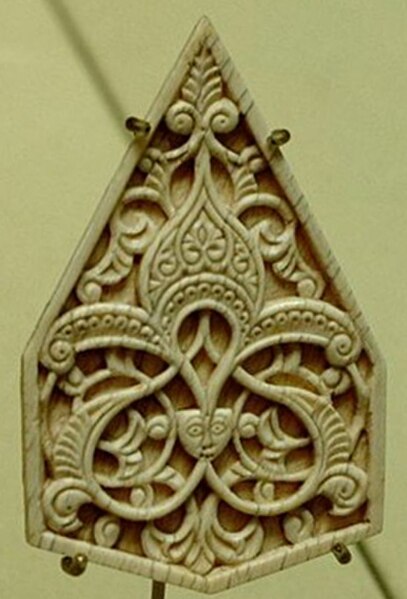The Baroque or Baroquism is a Western style of architecture, music, dance, painting, sculpture, poetry, and other arts that flourished from the early 17th century until the 1750s. It followed Renaissance art and Mannerism and preceded the Rococo and Neoclassical styles. It was encouraged by the Catholic Church as a means to counter the simplicity and austerity of Protestant architecture, art, and music, though Lutheran Baroque art developed in parts of Europe as well.
Image: WLA metmuseum Venus and Adonis by Peter Paul Rubens
Image: Ecstasy of Saint Teresa September 2015 2a
Image: Cour de Marbre du Château de Versailles October 5, 2011
Pendant in the form of a siren, made of a baroque pearl (the torso) with enameled gold mounts set with rubies, probably circa 1860, in the Metropolitan Museum of Art (New York City, New York).
In the visual arts, style is a "... distinctive manner which permits the grouping of works into related categories" or "... any distinctive, and therefore recognizable, way in which an act is performed or an artifact made or ought to be performed and made". Style refers to the visual appearance of a work of art that relates to other works with similar aesthetic roots, by the same artist, or from the same period, training, location, "school", art movement or archaeological culture: "The notion of style has long been historian's principal mode of classifying works of art".
La Vie by Pablo Picasso, 1903; falling under the "style label" of Picasso's Blue Period
Les Demoiselles d'Avignon (1907), also by Picasso in a different style ("Picasso's African Period") four years later
14th-century Islamic ornament in ivory, centred on a palmette; Alois Riegl's Stilfragen (1893) traced the evolution and transmission of such motifs.
Georges Seurat's very individual technique and style, Le Chahut, 1889–90








